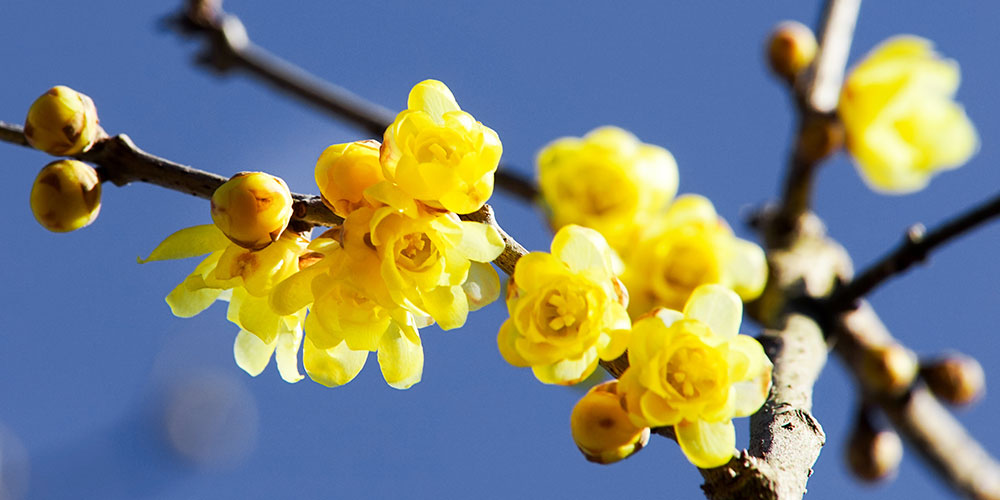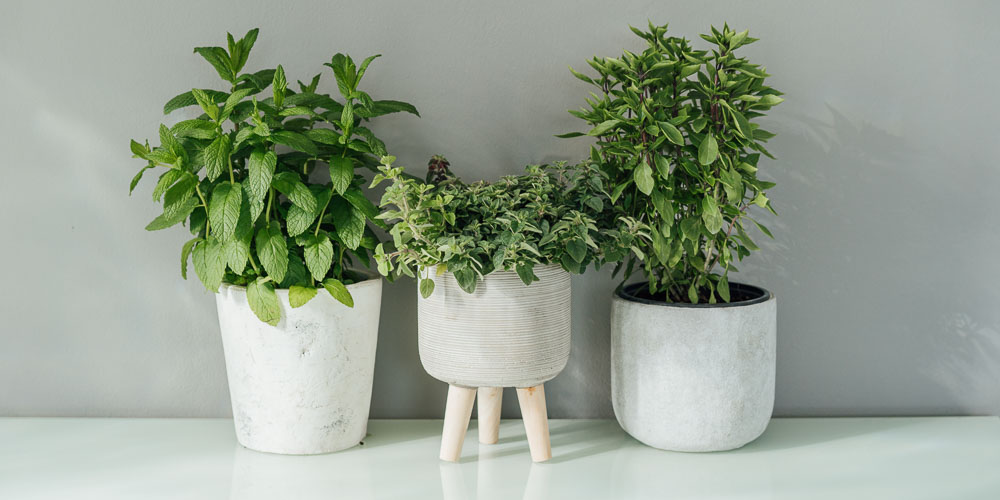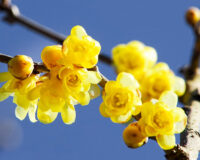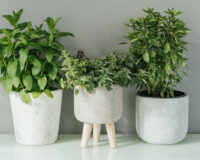Although most ornamental plants display their beautiful flowers from spring to autumn, winter has its own wonderful plants for our garden and balcony. After all, every season is unique and it is a great pleasure to enjoy flowering plants in our garden all year round.
Winter flowers include annuals, bulbous flowers, ornamental shrubs and fruit trees that can withstand the cold and bloom in the winter, adding color and vitality to our garden.
The flowers of winter, apart from their special beauty, also have important facilities in terms of their care, as they need less watering than plants that bloom the rest of the season, depending of course on the prevailing weather conditions.
Especially in rainy seasons, our winter plants are watered naturally and without the need for our intervention. At this time, it is good to stop the automatic watering that we have in our garden or on the balcony, if we have not provided a programmer with a rain sensor.
Also, during the winter, we stop the fertilization of plants and trees, as they enter either a state of dormancy such as deciduous trees, or due to low temperatures are unable to absorb nutrients through the root system.
We can add seaweed extract or a mixture of trace elements that helps to stimulate the plants and at the same time helps to protect them from the cold and the north winds.
The most beautiful flowers of winter Let's get to know the most beautiful plants that bloom in winter to plant in the garden and in a pot on our balcony and enjoy wonderful colorful flowers.
1. Pansies
Pansies are favorite annual spring flowers with low growth of 15 - 25 cm, dense vegetation and early flowering with impressive flowers. They bloom from mid-winter until the end of June. And as for colors, they have a great variety. Yellow, orange, burgundy, purple, white, blue as well as colorful combinations.
A characteristic variety of pansies are those that have a black spot in the center of the flower. We can choose varieties of pansies with smaller flowers, suitable for ground cover that are resistant to adverse weather conditions. We choose for the pansies a sunny place in the garden or on the balcony to give us a rich flowering.
2. Primula
The primrose got its name because it is considered the first flower that blooms in winter. Perennial herbaceous plant that gives its wonderful flowers in the winter from late December to late spring. Its flowers have a wide variety of colors to choose from. White, red, purple, yellow, pink, orange, blue, while we will also find two-tone varieties. For planting the primrose in a garden or in a pot, we choose places protected from the intense sun, as the primrose thrives in a relatively humid environment.
3. Cyclamen
Cyclamen is a perennial flower that begins to bloom in autumn, continues in winter and ends in spring. We can choose cyclamen from different colors. Pink, purple, red and white, or cyclamen with bicolor flowers. Cyclamen loves the cool environment and is planted in shady and semi-shady places to give us its rich flowering, protected from winds and intense sunshine. We can keep cyclamen even indoors, as an indoor plant, in a bright and ventilated area, away from radiators such as fireplaces and radiators.
4. Chrysanthemum
The chrysanthemum or St. Demetrius is another favorite flower that blooms in the autumn season with the characteristic flowers that look like daisies and continues to bloom in winter. We can choose different varieties of chrysanthemums to plant in the garden and in pots in the yard and on the balcony. Low varieties of chrysanthemums with large flowers, ideal for small pots and planters, as well as varieties of tall chrysanthemums, with many small flowers that are best planted in the garden. Chrysanthemums love the sun, so we make sure to plant them in sunny places.
5. Amaryllis
Amaryllis is an autumn planting bulb that gives us at the end of winter impressive flowers that project on long strong stems in many striking colors to match the winter scene. White, red, orange, yellow, as well as two colors. The amaryllis bulb is good to be planted in a warm, sunny part of our garden, sheltered from winds in soil that has good drainage. Plant the bulb in such a way that a small part of the amaryllis bulb is above the soil. We can also place the amaryllis in special glass jars with water, in a bright place inside the house to bloom.
6. Iris
The iris is a perennial herbaceous plant that is propagated by bulbs or rhizomes and gives us a very beautiful flowering in late winter and early spring. The flowers of the iris have a huge variety of colors, blue, white, red, yellow, orange, black and we will find two-tone varieties with excellent color combinations. We plant the irises in the fall in rock gardens, in flower beds and even in pots on the balcony in sunny places and in soil that has good drainage.
7. Yellow jasmine
The yellow jasmine blooms in the heart of winter and offers an impressive spectacle. It has a characteristic creamy vegetation, grows more laterally and reaches 3 meters in width and 2 meters in height. It blooms from December and has a prolonged flowering that lasts until March in southern areas before its new leaves appear. Yellow jasmine is planted in large pots with hanging shoots or selected for fences, walls and low railings. Extremely resistant to low temperatures as well as all types of soils, yellow jasmine thrives in sunny or semi-shady places.
8. Narcissus
Narcissus is another bulbous flower that is planted in autumn and blooms in late winter or spring. Narcissus gives us beautiful flowers in the shape of a trumpet, in a wide variety of colors from white, white-yellow, yellow-orange, reddish to rosé that emerge on thin stems. The narcissus is planted in sunny places in rock gardens, in flower beds of our garden, while it can be maintained as an indoor plant as long as we choose a bright place in our living room away from radiators.
9. Winter flower
The winter blossom is a deciduous ornamental shrub with lanceolate leaves, light green in color that blooms in the cold of winter. It has a relatively slow growth and can reach a height of 3-4 meters. The winter blossom is an excellent choice for our winter garden, as it gives us its fragrant flowers from the end of December until the beginning of March, before the leaves even come out. The flowers of the plant are 2-3 cm in diameter, yellowish in color, reminiscent of a star and have a red heart in their center. We choose places with enough sunshine and relatively fertile soils with good drainage to plant the winter flower.
10. Almond tree
And finally, the beautiful almond tree! Although it is not really an ornamental plant, this favorite fruit tree in the middle of winter shows white-pink flowers of unique beauty on its branches, before even its leaves appear. A flowering almond tree can be one of the most impressive elements of our winter garden. In addition, we can cut its flowering branches to decorate the vases in our winter living room. The almond tree is planted in sunny places and needs soil with good drainage. In general, it thrives in arid climates, and in areas that are not characterized by a high percentage of humidity.





